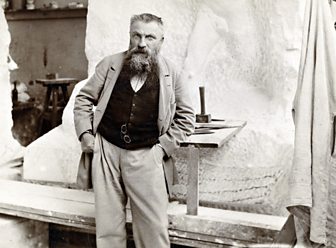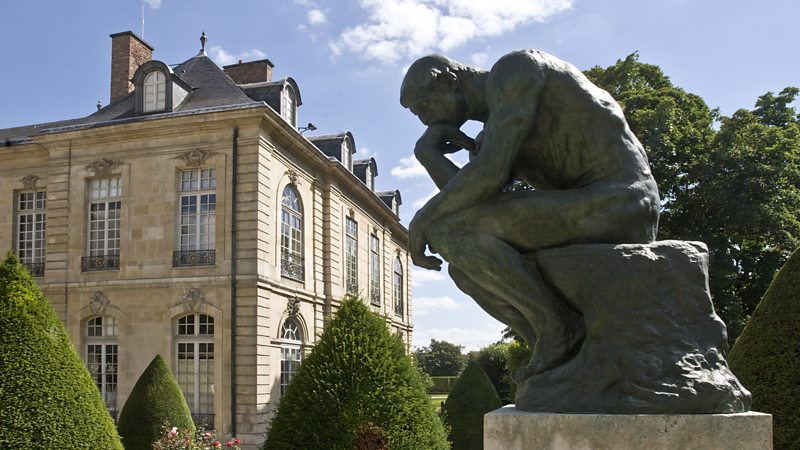Go figure: The Rodin Museum reopens in Paris
9 November 2015
After closing its doors for three years of major renovation work, on Thursday the Rodin Museum in Paris welcomes the public back into its galleries for the first time. WILLIAM COOK visits the much-loved chateau, where Rodin himself worked until his death, to discover how the building has become a timeline of the sculptor's life and greatest works.
The Rodin Museum was a royal palace, Russian embassy and church building before the sculptor moved in and made it his workshop.
The Rodin Museum in Paris is renowned as one of Europe’s great galleries, but after nearly a century of public use it was beginning to show signs of wear and tear.
Parisians adore this atmospheric museum, but even its most ardent admirers admitted it had become rather shabby. This €16 million refit restores it to its former glory, without losing any of its charm and character.

Rodin moved into the chateau in 1908, at the height of his fame
Everything is immaculate, from the parquet floors to the stucco ceilings
Sited in a pretty park in the centre of Paris, the Rodin Museum was built in 1730, 110 years before Rodin was born. At first it was a royal palace, then the Russian Embassy, and finally the home of a Catholic order called the Society of the Sacred Heart. In 1905 the French state expropriated this chateau from the Church, but they didn’t really know what to do with it. It was earmarked for demolition until 1908, when Auguste Rodin moved in.
Rodin rented a few rooms at first and then took over the entire building. He used it as a studio and showroom, a place to meet colleagues and patrons. He was in his late sixties when he came here, at the height of his fame. Acknowledged throughout Europe as the greatest sculptor since Michelangelo, he worked here until he died, in 1917. He left all of his work to the French state. The Rodin Museum opened in this chateau in 1919.
Walking through this museum, on the eve of its reopening, the first thing that strikes you is what a sensitive restoration this has been. Everything in here is immaculate, from the antique parquet floors to the ornate stucco ceilings, but there are no modern intrusions - nothing that would have looked out of place in Rodin’s day. The permanent exhibition shows similar respect for history. There are no computer gimmicks. The collection is arranged chronologically. Like all the best exhibitions, it’s a timeline of the artist’s life.
The big surprise about this show is the plethora of paintings. Initially, Rodin thought he might become a painter, rather than a sculptor. Viewing his early paintings, you can see why. His impressionistic landscapes are particularly good – reminiscent of Pissarro. As Rodin’s career progressed, he became a frequent subject for portrait painters, such as John Sargent, who captures Rodin’s Old Testament appearance and his forceful personality.
This show also features some of the paintings he collected, including a stormy seascape by Monet (a good friend, with whom he exhibited), and three fine oils by Van Gogh, whom Rodin called ‘an admirable demolisher of academic formulae.’ It was a description he could have applied to himself. Now that he’s revered as the grand old man of classical sculpture, it’s easy to forget what a divisive figure Rodin was during the earlier stages of his career.

The tranquil garden surrounding the museum is an open-air gallery space
This museum is full of masterpieces which initially caused outrage. The reason they no longer seem controversial is because Rodin changed the artistic landscape. Like all great artists, he brought us round to his point of view.
His iconic artworks would have counted for nothing without sweat and toil
All the greatest hits are here: The Kiss, The Thinker, The Burghers of Calais… However what’s so special about this museum is that it charts all the stages in the construction of these masterworks. Seeing these preparatory studies, in plaster and papier mache, you realise what a painstaking process this was, how much revision was involved. Gradually, his figures acquire lives, and distinct personalities, of their own.
“For one work like The Thinker or The Kiss we have thousands of sketches,” says Catherine Chevillot, the Director of the museum. Rodin was inspirational, an artist of genius, but his iconic artworks would have counted for nothing without sweat and toil.
In a way, Rodin was almost too successful. His sculptures adorn so many public spaces - across France and all around the world - that he’s vanished into the foreground. This show allows you to see his work with fresh eyes. His smaller marble sculptures are much more intimate than his bigger, more bombastic bronzes. You see his figures growing out of the stone.
The most interesting room is the recreation of Rodin’s studio, complete with the screen behind which his models used to undress. The sculptures in here are placed on crates instead of plinths, which I thought was an avant-garde affectation - until I read that this was how Rodin displayed them.
My favourite gallery of all is the tranquil garden that surrounds the museum – a rendezvous for lovers as well as art lovers (it’s a popular place for Parisians to propose). These gardens are festooned with Rodin sculptures – his Adam & Eve are especially imposing. His sculptures always look best outdoors, and never better than in Paris, amid the autumn leaves.
“He was a link between the 19th Century and the 20th Century,” says Chevillot. And, she might have added, the 21st Century, too. As I leave this splendid museum and head through the gardens, I pass a group of students, gathered round Rodin’s dynamic statue of Balzac. They’re all drawing Rodin’s statue, and though each of their sketches is unique, they’re all instantly recognisable as Balzac. Almost a century since his death, the aura of Auguste Rodin lives on.
Comments
Post a Comment